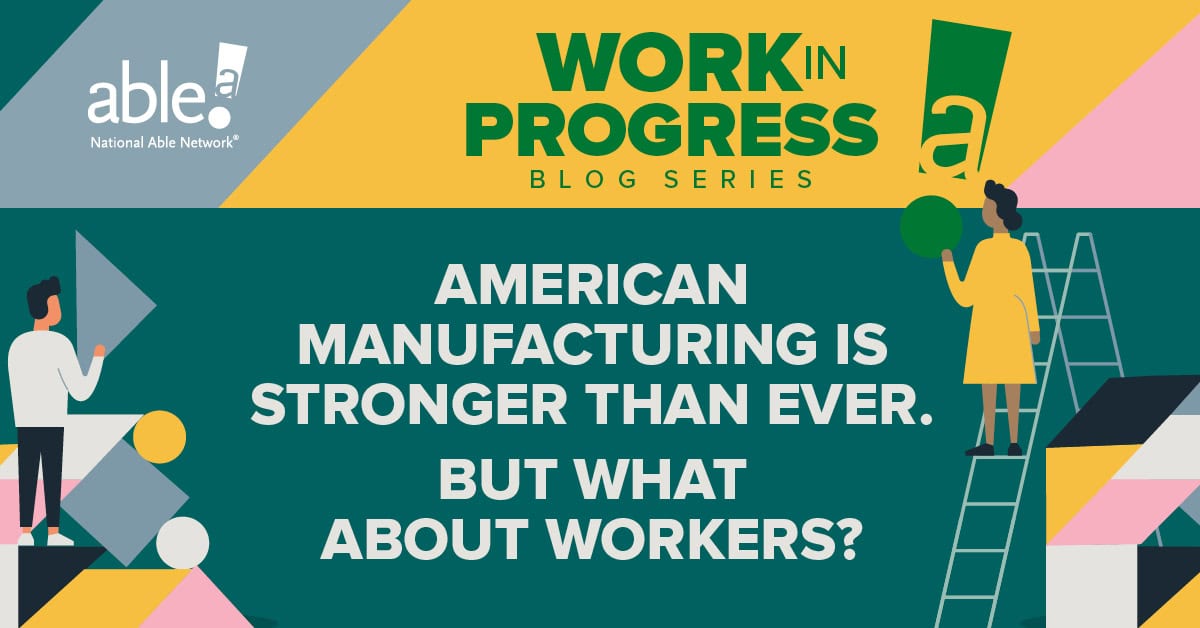When you think of American manufacturing, what do you picture? Most people probably visualize a Rust Belt city on the shores of Lake Erie, smokestacks and the smell of slag filling the air, and a hollowed-out town in the distance.
This stereotype exists for a reason, of course. As American manufacturing began to be outsourced abroad in the 1970s and 1980s the domestic industry went into turmoil. Large factories downsized and eventually closed. The manufacturing industry shed jobs, and those workers were thrust into a new economy where they could not compete with their skillset.
That story resonates because it is true, and even now domestic workers face stiff competition with international manufacturers. But the story of decline is also outdated: today, domestic manufacturing job openings are outpacing workers to fill them, wages are rising, and even young people are finding their way into factories.
According to the U.S. Chamber of Commerce, analyzing data compiled by the Bureau of Labor Statistics, only 55.5 percent of all manufacturing jobs are filled and there are 620,000 job openings that need workers. Wages are rising too: the Federal Reserve Bank of St. Louis has found that manufacturing wages in Illinois are around $25.00 per hour, which represents a significant gain from 15 years ago, when wages were under $20.00 per hour.
The American manufacturing industry is rebounding, but many times workers are still stuck in the middle. The recent gains represent more of an entrenchment than true growth, especially compared to how the sector performed 40 or 50 years ago. And the Covid-19 pandemic permanently knocked out thousands of workers from the manufacturing labor pool.
During the COVID-19 pandemic, early retirements and less immigration have left the nation with a worker deficit. Plus, boosted unemployment benefits, stimulus payments, and child tax credits offered during the pandemic padded the finances of some previously employed workers, and they no longer need to work, or in some cases, people have adjusted to a single-income household lifestyle.
What can former manufacturing workers who have left the industry but want to get back to work do to reskill?
Unfortunately, the Trade Adjustment Assistance program has not been renewed by Congress to support workers who have lost their jobs due to trade. But interested workers can still receive training through the Workforce Innovation and Opportunity Act (WIOA), as well as National Able Network’s in-house programs, IT Career Lab and RemarkAble.
American manufacturing may be making a comeback, but for workers who have been left behind or want to change careers, opportunities still await.

